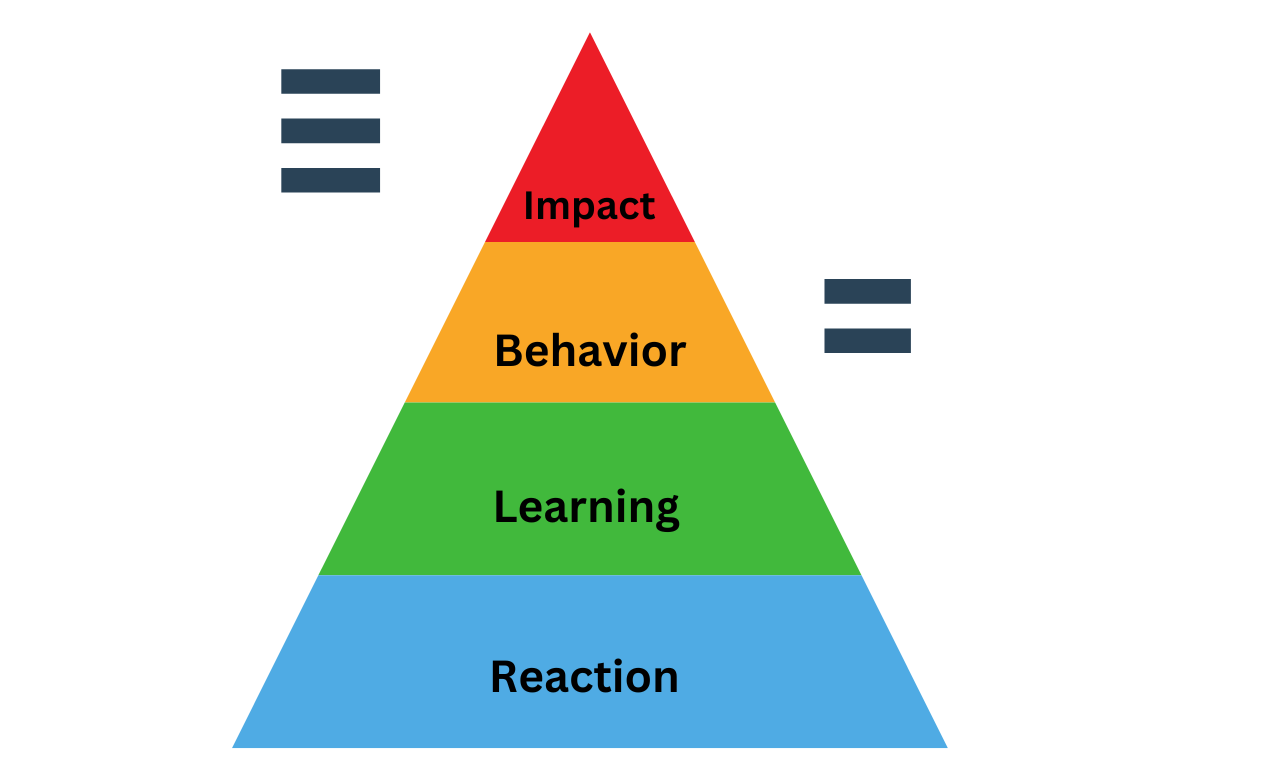Evaluating your learning program will help you measure its impact on the business and support your efforts to strategically adapt and expand the program over time in response to both learner and organizational needs. Most learning programs can be assessed using Kirkpatrick’s four-level evaluation framework.
Reaction
Surveys are typically used to gauge learners’ reaction to the program. These “smile sheets” help the program leader to determine if changes are necessary to enhance the learning experience. They take into consideration the content (quality and/or relevance to the audience), delivery modality (facilitated by a trainer live or live-online or accessed on-demand) and materials (quality, ease of use). These surveys are usually concise and administered immediately following a specific learning event to capture real-time reactions. Findings from this type of evaluation can be a combination of scores and anecdotal feedback.
Learning
The uptake of self-directed sustainment learning resources, participation in and best practices shared during accountability groups, and performance on periodic quizzes or group projects/presentations allow participants to demonstrate the degree to which they have acquired and understand the intended knowledge, skills and attitudes presented in the program. By evaluating comprehension, the program leader can determine if there are barriers to accessing information, if the content is relevant, or if added support is needed. Findings from this type of evaluation can be a combination of scores and anecdotal feedback.
Behavior
Level 3 evaluation assesses the extent to which participants have applied their new knowledge and skills to their work, the effect this has had on their work performance, and the effect on the team or organization. Several metrics may provide insight into individual behavior change. Samples include pre/post program 360-assessment results, changes in the participant and their team’s engagement and performance, and succession opportunities realized through expanded responsibilities, influence and/or promotion assigned to the participant. Findings from this type of evaluation can be a combination of scores and anecdotal feedback from the participant’s manager, peers and direct reports and anecdotal self-assessment and feedback by the participant.
Business Impact
Finally, this level of evaluation seeks to measure changes in business performance as a result of collective application of new learning to the workplace. Evaluation of this type correlates (directly or indirectly) the implementation of a learning program and changes in select business performance measures such as employee engagement scores, employee retention/turnover rates, “ready now” leader pipeline, customer satisfactions scores, safety scores and productivity rates.
This sample questions may be customized and included in your program evaluation tools.
----------------------------------------------------------------------------------------------------
Learn how your organization can use our people, content, and technology to create collective action and meaningful change. Contact us today


